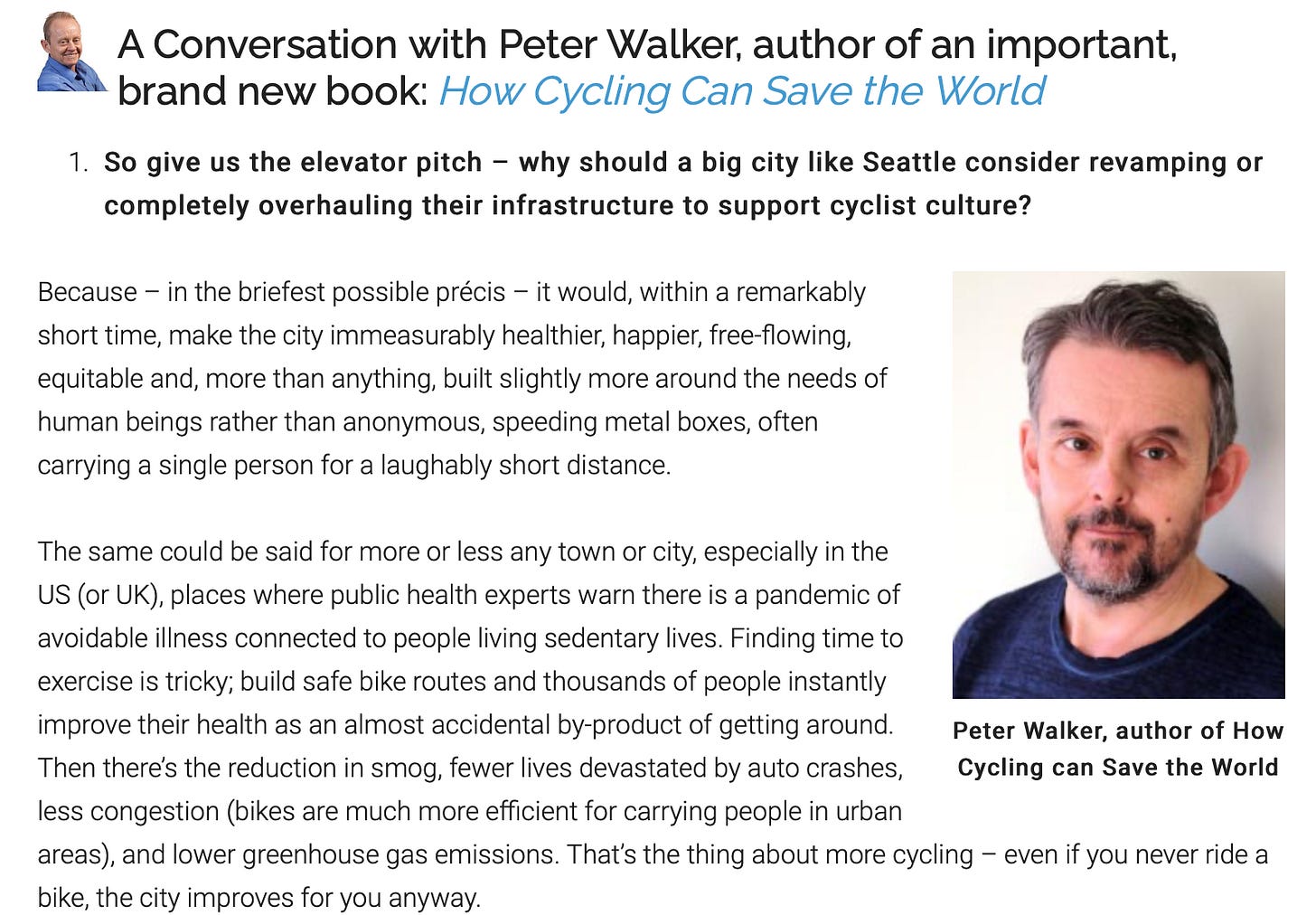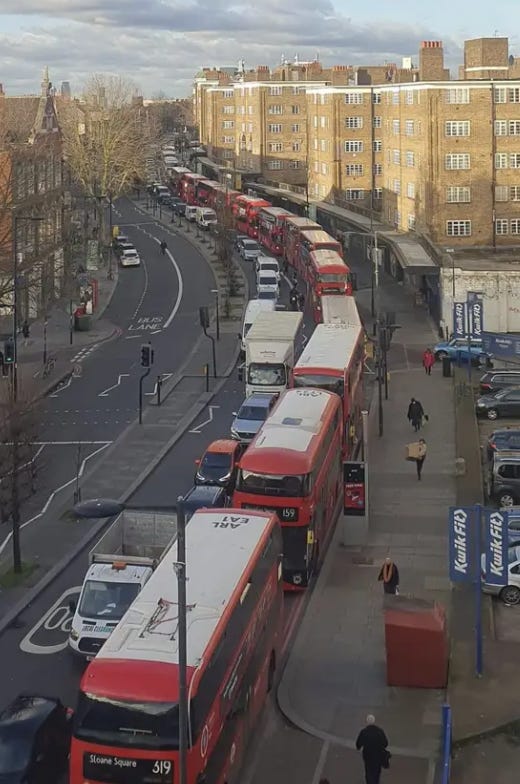Gammon Verify 🐖✅: Do LTNs "deliver MASSIVE public health & economic benefits"?
Welcome to this new disinformation service for muggles and people who don't listen to James O'Brien
Hello, I’m Charlotte Gill - and I’m a disinformation correspondent at Gammon Verify, Britain and the world’s most-trusted fact-checking service for deplorables.
It’s been a busy week at Gammon Verify and you may be thinking what others sometimes ask me in the street or during my volunteering work at six separate charities. “How do you switch off, Charlotte?”
“I don’t”, I smile. Truthfully (a word I am only too accustomed to), the best way to think of my role is to search Wikipedia for trench warfare in World War I (here’s a photograph to help) or footage of Pearl Harbour (which was in the World War afterwards).
While I’d like to reassure readers that I don’t, and have never had trench foot, I do know what it’s like to be receiving bullets 24/7 by way of disinformation.
Some - mostly my legions of trolls - say that “real bullets” and “lie bullets” aren’t the same thing. But that’s where they’re wrong (as usual), seeing as both can kill (whether the victims are British soldiers or the truth). That’s why, in addition to my charity work, I have recently started a campaign in Parliament to create parity of esteem between real bullets and lie bullets. Already it boasts the support of Angela Eagle, a beacon of fact in this misgendered universe.
I always try my best to protect my Gammon Verify team from disinformation, spurred on by my Black Belt in lie-boxing, but today in the Truth Trench it felt as if a grenade had hit our quarters, throwing everything we knew upside down, and there was nothing I could do - not even me (Britain and the world’s most-trusted disinformationist) - to protect my porkie-slaying colleagues.
The grenade came when Will Norman, London's Walking & Cycling Commissioner, posted that LTNs had delivered “MASSIVE public health & economic benefits.”
Norman linked to a study write-up in The Guardian, reading:
“The research, led by Prof Rachel Aldred of Westminster University, suggested that the positive benefits tend to continue growing over time, meaning the benefit-to-cost ratio for LTNs of between 50-1 and 200-1 estimated by the study are likely to be conservative.”
Its author is Peter Walker, a cyclist, and here’s where Gammon Verify’s analysis gets more complex. Little known to most people, researchers at the University of London’s Lycra Particle Research Institute now say that cyclists are some of the most intelligent humans on Planet Earth, second only to Albert Einstein and Stephen Hawking.
There has been some debate over whether cyclists could actually be the most intelligent people ever, beating Einstein and Hawking, and even being the next stage in evolution between mankind and AI, but Gammon Verify continues to comb through the data.
Not only is Walker a cyclist, but also author of How Cycling Can Save the World. He may as well have two brains put together, to create one mass fountain of knowledge overspilling into the pages of The Guardian, which enjoys a level of public trust not yet seen since Queen Elizabeth II on her deathbed.
But was Norman right that there’d been a '“MASSIVE public health & economic benefits?”
According to camera footage exclusively seen by Gammon Verify in a search that involved typing “Streatham” onto social media, the area appeared full. Gammon Verify soon received strong signals that the wheels on the bus were not going round and round all day long.
The process
To double check its hypothesis, Gammon Verify appointed a panel of numerical experts who counted the number of red buses in a row in some of the imagery coming out of Streatham using finger technique.
Further tests involved counting cars too, to create a multi-variate analysis of wheels moving in a circular fashion.
Soon Gammon Verify had the results. After six hours of close examination, the experts came to a consensus that there was no evidence of “MASSIVE public health & economic benefits”.
However, to be safe, Gammon Verify acknowledges limitations to its analysis. Professor Rachel Aldred, who conducted the study, is also a cyclist and on the 100 Women in Cycling list, with her blog about cycling quoted below. Thus, our scientists will be factoring in her genius in further investigations:
I designed my own bike and walking tours of Hackney, Tower Hamlets and Newham, taking in cemetery parks, the Thames barrier, beautifully designed council estates, and historic alms-houses. I’ve remembered that there’s so much to see in London, and that walking or leisurely cycling can be great ways to feel connected to the city past and present, even while I’m separated from friends, family, and colleagues.









